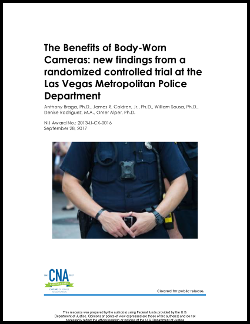
This report summary provides an overview of a randomized controlled trial using body-worn cameras in the Las Vegas Metropolitan Police Department. Many community stakeholders and criminal justice leaders have suggested placing body-worn cameras (BWCs) on police officers improves the civility of police-citizen encounters and enhances citizen perceptions of police transparency and legitimacy. In response, many police departments have adopted this technology to improve the quality of policing in their communities. However, the existing evaluation evidence on the intended and unintended consequences of outfitting police officers with BWCs is still developing. This study reports the findings of a randomized controlled trial involving more than 400 police officers in the Las Vegas Metropolitan Police Department (LVMPD). The authors find that BWC-wearing officers generated significantly fewer complaints and use of force reports relative to control officers without cameras. BWC-wearing officers also made more arrests and issued more citations than their non-BWC-wearing controls. In addition, a cost-benefit analysis revealed that savings from reduced complaints against officers, and the reduced time required to resolve such complaints, resulted in substantial cost savings for the police department. Considering that LVMPD had already introduced reforms regarding use of force through a Collaborative Reform Initiative prior to implementing body worn cameras, these findings suggest that body worn cameras can have compelling effects without increasing costs.
